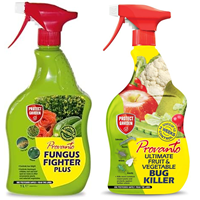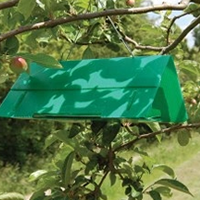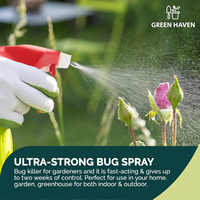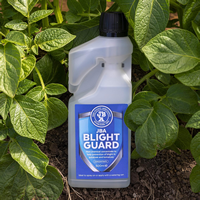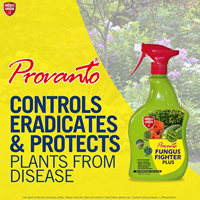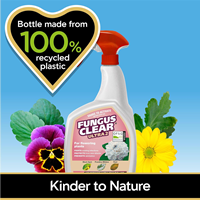Ficus elastica Decora - India Rubber Tree - Rubber Plant

The Plant: The Rubber Plant, Ficus elastica Decora, a very well-known houseplant. Large oval leathery green leaves, arising from a green central stem. New growth is salmon pink.
Its needs: Avoid direct sun but provide good light. A sandy potting mix aids drainage, but place the container on a saucer of wet pebbles, or place a jam jar of water behind the Rubber Plant, to maintain high humidity. Warm growing conditions preferred.
Care: Do not over-water the Ficus elastica, provide moderate watering in growing season, but water very sparingly in winter. Spray mist or sponge the leaves in hot dry weather. The Rubber Plant can withstand short periods of cool temperatures but does better in warm humid conditions.
Watch for scale pest, mealy bug, and red spider mite. Trim back growing tips, (end shoots), on main stem and side stems in order to maintain neat appearance.
Good for: An easy care, elegant, simple foliage plant. Good for home, conservatory or office.
In real life the Ficus can get a little bit bigger! this one in a public park in Bangkok! The variegated rubber plant - Ficus elastica Decora Variegatum
A Complete Guide to Planting, Pruning and Caring for a Ficus elastica ‘Decora’ - India Rubber Tree - Rubber Plant
Introduction
The Ficus elastica Decora, also known as the India Rubber Tree or Rubber Plant, is an attractive and easy-to-care-for houseplant. With its lush foliage and upright stature, it is a great addition to any home or office. Its glossy, deep green leaves are a beautiful contrast to the light green veins running through them, making it an eye-catching addition to any space. With the right care, your Ficus elastica Decora will thrive and bring a touch of nature to your home. In this complete guide, we will cover everything you need to know about planting, pruning, and caring for your Rubber Plant.
Ficus elastica ‘Decora’ Overview
The Ficus elastica ‘Decora’, more commonly known as the India Rubber Tree or Rubber Plant, is an evergreen plant with glossy, dark green leaves that are oval-shaped with a leathery texture. Its thick stems make it an ideal choice for a variety of environments, and its ability to tolerate low light and humidity make it an easy-care houseplant. With proper care, the Ficus elastica ‘Decora’ can reach heights of up to 8ft and can live for many years. Its unique, dark green foliage makes it a great addition to any home and can be used to add texture to any interior.
Preparing the Soil for Planting
Before you can begin planting your Ficus elastica ‘Decora’, commonly known as India Rubber Tree or Rubber Plant, you must first prepare the soil. This is the key to a healthy and thriving plant. The soil should be well-draining, as too much moisture can cause root rot. It should also be slightly acidic, with a pH between 5.5 and 6.5. To achieve this, mix equal parts of potting soil, peat moss, and perlite. This will provide the perfect balance of drainage and moisture retention. To ensure the soil is fertile, mix in a slow-release fertilizer that is specifically formulated for ficus plants. Once you have the soil prepared, you can begin planting your Ficus elastica ‘Decora’ and enjoy its lush foliage and unique aesthetic.
Propagation Guide for Ficus elastica ‘Decora’ - India Rubber Tree - Rubber Plant
Ficus elastica, more commonly known as the Rubber Plant, is a popular houseplant due to its hardy nature and striking foliage. Here's a comprehensive guide on how to propagate it successfully.
Preparation of CuttingsWhen propagating a rubber plant, the best method to use is stem cuttings. Choose a healthy, mature stem with at least two leaves on it. Using a sharp, sterilized knife, make a cut at a 45-degree angle about 6 inches down from the tip of the stem. Remove the lower leaf to make planting easier.
Rooting Hormones and Growth MediaWhile rooting hormones are not strictly necessary for rubber plants, they can speed up the rooting process and increase the success rate. Dip the cut end of your stem into a rooting hormone before planting.
As for growth media, you can use either water or soil. If using water, simply place the cutting in a glass or jar filled with water, making sure the cut end is submerged. Change the water every few days to prevent bacterial growth.
If using soil, opt for a well-draining potting mix.
Ideal Environmental ConditionsRubber plants prefer warm, humid environments. Keep the cutting in a bright location but out of direct sunlight. The temperature should stay between 60-75°F (15-24°C), and humidity levels should be high.
Care for New PlantsOnce roots have developed, transfer the cutting to a pot with well-draining soil. Water when the top inch of soil is dry, and position the plant in a spot with bright, indirect light.
Challenges and SolutionsOne common challenge is root rot, which typically occurs when the plant is overwatered. To prevent this, ensure the plant has good drainage and do not let it sit in water.
Another challenge could be leaf drop, often caused by sudden changes in temperature, light, or humidity. Try to maintain consistent conditions for your plant.
Tips and Tricks- Use a clear jar for water propagation so you can monitor root growth.
- If you're struggling to maintain high humidity, try creating a mini greenhouse by covering the plant with a plastic bag.
Additional Information
Rubber plants prefer slightly acidic to neutral pH soils (6.1 to 7.3). They do not require heavy fertilization; feeding them once a month with a balanced houseplant fertilizer during the growing season (spring and summer) is sufficient.
In terms of watering, these plants prefer their soil to dry out slightly between waterings. Overwatering can lead to root rot. However, under-watering can cause droopy leaves. Therefore, it is crucial to strike a balance.
Remember, patience is key with plant propagation. It may take several weeks for roots to develop, but the wait is worth it when you see your new rubber plant thriving!
A Step-by-Step Guide to Propagating Ficus elastica 'Decora' (Rubber Plant) Through Stem Cuttings
The Ficus elastica 'Decora', also known as the Rubber Plant, is a popular houseplant for its striking foliage and easy care. Here's how you can propagate it using stem cuttings.
Materials and Tools Needed- A healthy Rubber Plant
- Sharp, sterilized pruning shears or knife
- Rooting hormone (optional)
- Glass jar or vase filled with water, or pot with well-draining potting soil
- Plastic bag (optional)
- Step 1: When and Where to Cut The best time to take a cutting is in the early spring when the plant is in its active growth phase. Choose a healthy, mature stem from your Rubber Plant that has at least two leaves. The cutting should be taken from the tip of the stem and should be about 6 inches long.
- Step 2: How to Cut Using your sterilized pruning shears or knife, make a cut directly below a leaf node (where the leaf connects to the stem). The cut should be at a 45-degree angle to increase the surface area for rooting.
- Step 3: Preparing the Cutting Remove the lower leaf from the cutting. If you're using a rooting hormone, now is the time to dip the cut end of the stem into it. While not necessary, this can speed up the rooting process and increase success rates.
-
Step 4: Planting the Cutting
If you're using water, place the cutting in your glass jar or vase, making sure the cut end is submerged but the remaining leaf or leaves are not touching the water.
If you're using soil, make a hole in the soil with your finger, then place the cutting in the hole and firm the soil around it.
-
Step 5: Caring for the Cutting
Place the cutting in a warm, bright location out of direct sunlight. If using soil, you may want to cover the pot with a plastic bag to create a mini greenhouse and increase humidity, which can aid in rooting.
For water propagation, change the water every few days to prevent bacteria buildup. For soil propagation, keep the soil consistently moist but not waterlogged.
- Step 6: Transplanting Once roots have developed (which can take several weeks), you can transplant the cutting to a larger pot with well-draining soil. Be gentle during this process to avoid damaging the new roots.
Challenges, Solutions, and Tips
One common challenge is root rot, often caused by overwatering. Ensure good drainage and let the top inch of soil dry out between waterings to prevent this.
Leaf drop can occur due to sudden changes in temperature, light, or humidity. Try to maintain consistent conditions for your plant to prevent this.
As for tips, consider using a clear jar for water propagation so you can easily monitor root growth. Once your new plant is established, place it in a location with bright, indirect light and water when the top inch of soil is dry.
As far as products go, a balanced houseplant fertilizer applied monthly during the growing season can help keep your new Rubber Plant healthy and thriving.
Remember, patience is key in plant propagation. Good luck!
Planting Techniques for Ficus elastica ‘Decora’
Planting a Ficus elastica ‘Decora’, also known as the India Rubber Tree or Rubber Plant, is a great way to add a touch of greenery to your home. This low-maintenance plant is easy to care for and can thrive in almost any type of indoor environment. The trick to successful planting is to ensure you have the right potting mix and that you provide the plant with the proper amount of sunlight and water.
To begin, you'll need a pot with ample drainage holes and a potting mix that is designed for indoor plants. Make sure to fill the pot with enough soil so that the Ficus elastica ‘Decora’ can be planted at the same depth as it was in its previous pot. Once the pot is filled, gently place the plant in the center and press down lightly to ensure it is firmly in place. Water the soil until it is evenly moist, but not soggy.
Now your Ficus elastica ‘Decora’ is planted and ready to thrive! Keep in mind that this plant prefers bright, indirect sunlight and should be watered only when the top layer of soil is dry. With proper care, your India Rubber Tree or Rubber Plant will bring you years of enjoyment.
Watering and Fertilizing Schedules for Ficus elastica ‘Decora’
When it comes to watering and fertilizing your Ficus elastica ‘Decora’, also known as the India Rubber Tree or Rubber Plant, the key is to find the right balance. Water your Rubber Plant deeply but infrequently. Allow the soil to become slightly dry between waterings, and then water thoroughly. If you’re unsure if your plant needs water, stick your finger into the soil up to the first knuckle. If the soil feels dry, it’s time to water. During the summer months, you may need to water your Ficus elastica ‘Decora’ once a week. During the winter, it may only need water once every two weeks.
Fertilizing your Rubber Plant is also important. During the growing season, use a balanced liquid fertilizer every two weeks. During the winter, you can reduce the amount of fertilizer or switch to a slow-release fertilizer. Be sure to follow the directions on the fertilizer package to ensure your Ficus elastica ‘Decora’ is getting the right amount of nutrients.
Pruning and Grooming Tips for Ficus elastica ‘Decora’
When it comes to pruning and grooming your Ficus elastica ‘Decora’, also known as the India Rubber Tree or Rubber Plant, the key is to be gentle but firm. Pruning should be done sparingly - the goal is to maintain the desired shape and size of your Rubber Plant, not to drastically alter it. Start by removing any dead or diseased leaves, and then, if necessary, trim away any excess growth. When pruning, be sure to use sharp, clean scissors or shears to make clean, even cuts.
Grooming your Rubber Plant is also an important part of its care. To keep your Ficus elastica ‘Decora’ looking its best, regularly remove any dust or debris that may have accumulated on its leaves. You can also use a damp cloth to wipe away any dirt or grime that may have built up. With the right care and attention, your Rubber Plant will thrive for years to come.
Pest Management Techniques for Ficus elastica ‘Decora’
Pest management is an important part of caring for a Ficus elastica ‘Decora’, also known as an India Rubber Tree or Rubber Plant. This plant is susceptible to a variety of pests, including mealybugs, spider mites, aphids, and scale. To keep your Rubber Plant looking lush and healthy, it’s important to take the necessary steps to prevent and control these pests. One way to do this is by regularly inspecting the plant for signs of infestation and treating it with an insecticidal soap or horticultural oil. Additionally, to help prevent pests, you can use neem oil, which is an organic pesticide derived from the neem tree. Neem oil works by disrupting the reproductive cycle of the pests, preventing them from multiplying. Lastly, you should make sure to keep your Ficus elastica ‘Decora’ in a well-ventilated area and avoid over-watering, as these conditions can make your plant more susceptible to pests. With regular care and pest management, your Rubber Plant will thrive for years to come.
A Comprehensive Guide on Pests and Diseases Affecting Ficus elastica 'Decora' Plants
Ficus elastica 'Decora', or the Rubber Plant, is a favorite among indoor plant enthusiasts for its hardy nature and beautiful foliage. However, like any other plant, it can be susceptible to certain pests and diseases. Here's a comprehensive guide to help you identify, prevent, and treat these common problems.
Symptoms and Signs of Diseases- Leaf Spots: Usually round or irregular in shape, with colors ranging from brown to black. They may appear water-soaked or have a yellow halo around them.
- Stem or Root Rot: Yellowing and wilting of leaves, stunted growth, and browning or blackening of roots are typical symptoms. The base of the stem may also become soft and mushy.
- Blight: This is characterized by rapid and extensive browning and wilting of leaves, stems, or the entire plant.
- Anthracnose (Fungal): This causes dark, sunken lesions on leaves and stems. Avoid overhead watering and prune infected areas to control it.
- Root Rot (Fungal): Overwatering can lead to this. Ensure good drainage and avoid overwatering to prevent it.
- Xanthomonas Leaf Spot (Bacterial): Causes leaf spots with yellow halos. Maintain good air circulation and avoid wetting the leaves to prevent it.
- Mosaic Virus (Viral): Causes mottled yellow and green leaves. It's spread by insects and contaminated tools, so keep pests under control and sterilize tools to prevent it.
Common Pests
- Spider Mites: These tiny pests cause yellow speckling on leaves. They thrive in dry conditions, so maintain good humidity.
- Mealybugs: They appear as cottony white masses on leaves and stems. They suck sap, causing leaves to yellow and drop.
- Scales: These pests look like small, flat discs on leaves and stems. They also suck sap, leading to yellowing and dropping of leaves.
- Thrips: These small, slim insects cause silver-white streaks or spots on leaves. They also spread viruses.
- Caterpillars: They chew holes in leaves. Handpick them off or use a biological insecticide.
- Regular Inspection: Check your plants frequently for early signs of pests and diseases.
- Proper Watering: Avoid overwatering and ensure good drainage to prevent root rot and other water-related diseases.
- Good Air Circulation: This helps to prevent fungal and bacterial diseases.
- Pest Control: Use insecticidal soap or neem oil for most pests. For severe infestations, you may need to use a systemic insecticide.
- Quarantine New Plants: Keep new plants separate from your existing ones until you're sure they're disease-free.
- Cleanliness: Keep your growing area clean, and sterilize your tools regularly.
Remember, the key to managing pests and diseases is early detection and intervention. A healthy Rubber Plant is more resistant to pests and diseases, so provide the right growing conditions and care for your plant regularly.
Light, Temperature, and Humidity Requirements for Ficus elastica ‘Decora’
When it comes to growing a Ficus elastica ‘Decora’, also known as the India Rubber Tree or Rubber Plant, light, temperature, and humidity requirements are essential for the plant’s health and growth. The Rubber Plant prefers bright, indirect light but can tolerate some direct sunlight. It is best to keep the plant in temperatures between 65 - 80°F, and maintain a humidity level of 40-50%. When exposed to lower temperatures, the Rubber Plant can suffer from leaf drop and brown spots. The Rubber Plant is quite resilient, however, and can be pruned to maintain its desired size and shape. With the right light, temperature, and humidity levels, the Rubber Plant can thrive in any home or office.
Conclusion
The Ficus elastica ‘Decora’, also known as the India Rubber Tree or Rubber Plant, is a beautiful, low-maintenance houseplant that can bring a touch of nature and greenery to any home. With proper planting, pruning, and care, this slow-growing plant can become a long-lasting and dependable part of your home. With its lush leaves and easy-care nature, the Ficus elastica ‘Decora’ is an ideal houseplant for any home.
In conclusion, the Ficus elastica ‘Decora’, also known as the India Rubber Tree or Rubber Plant, is a versatile and easy-to-care-for plant. With proper preparation of the soil, planting techniques, watering and fertilizing schedules, pruning and grooming tips, pest management techniques, and light, temperature, and humidity requirements, your Ficus elastica ‘Decora’ will thrive and bring beauty and life to your home or office. With a little bit of knowledge and care, you can have a beautiful Ficus elastica ‘Decora’ in no time. So, what are you waiting for? Start planting your Ficus elastica ‘Decora’ today!
Frequently Asked Questions
FAQ Questions and Answers:
Q: What is Ficus elastica ‘Decora’?
A: Ficus elastica ‘Decora’, also known as the India Rubber Tree or Rubber Plant, is a species of evergreen tree native to the Indian subcontinent. It is a fast-growing, low-maintenance plant that can reach heights of up to 10 feet and is well-suited to indoor and outdoor spaces alike.
Q: How do I prepare the soil for planting Ficus elastica ‘Decora’?
A: Ficus elastica ‘Decora’ prefers a well-draining, nutrient-rich soil. To prepare the soil, mix in compost or aged manure to increase fertility and drainage. If planting in a pot, use a commercial potting soil mix.
Q: What planting techniques should I use for Ficus elastica ‘Decora’?
A: When planting Ficus elastica ‘Decora’, it is important to make sure the root ball is completely covered with soil. If planting in a pot, make sure to use a pot with adequate drainage holes. When planting in the ground, dig a hole twice as wide and twice as deep as the root ball.
Q: What is the watering and fertilizing schedule for Ficus elastica ‘Decora’?
A: Ficus elastica ‘Decora’ requires regular watering, but should not be overwatered. Water when the top inch of soil is dry. Fertilize once a month during the growing season with a balanced fertilizer.
Q: What pruning and grooming tips should I follow for Ficus elastica ‘Decora’?
A: Pruning and grooming are important for keeping Ficus elastica ‘Decora’ healthy and looking its best. Prune to maintain the desired shape, but avoid pruning more than 25% of the plant. Groom the leaves regularly to remove dust and debris.
Q: What pest management techniques should I use for Ficus elastica ‘Decora’?
A: Ficus elastica ‘Decora’ is susceptible to pests such as spider mites, mealybugs, and scale. To manage pests, inspect the plant regularly and remove any pests by hand. If necessary, use an insecticidal soap or horticultural oil. Additionally, to prevent pests, use neem oil, which is an organic pesticide derived from the neem tree.
Q: What light, temperature and humidity requirements should I follow for Ficus elastica ‘Decora’?
A: Ficus elastica ‘Decora’ prefers bright, indirect light but can tolerate some direct sunlight. It should be kept in temperatures between 65 - 80°F, and maintain a humidity level of 40-50%. To help maintain these levels, mist the leaves with water regularly. With the right light, temperature and humidity levels, your Ficus elastica ‘Decora’ will thrive for many years to come.A-Z of Houseplant Common Names
Best Selling Gardening Products
Popular Gardening Sections

Problems
Identify Weeds in The Garden - How to deal with weeds. Diseases and Pest which harm your garden and plants, learn how to prevent, deter and erradicate your garden problems.
Garden Problems
Pruning
Pruning Guide. Shrubs flower better with correct pruning. Many illustrations and examples of what to do - and when. Includes evergreens, roses, flowering shrubs, spring flowering shrubs and pruning for stem effect. This is our most viewed and comprehensive section,
Pruning
Gardening Businesses
Gardening Businesses listed in the UK counties and USA states. County and State Listings of businesses involved in Garden supplies and services. If you wish to be added to the Directory, please send us your information. Having problems, use the search box
Businesses
Gardening
In this section you will learn about Gardening Basics, Containers, Landscaping, Propagation and Soil.
Gardening
Gardening Gifts
Gardening Gifts and Reviews, Read Before you Buy
- Gardening Gifts Ideas
- Gifts For Her
- Gifts For Men
- Power Tool Gifts
- Cheap Gifts
- Personalised Gifts
- Wildlife Gifts
- Family Gifts
